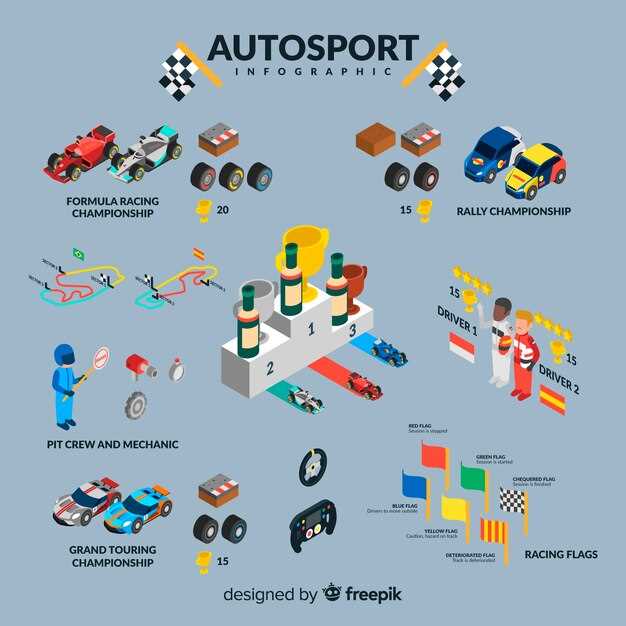
In the high-stakes environment of motorsport, track marshals play an essential role in ensuring the safety and smooth operation of racing events. These dedicated individuals form an integral part of the race control team, tasked with monitoring the racetrack and responding swiftly to any incidents that may occur during a race. The efficiency of track marshals directly impacts the safety of drivers and the overall integrity of the competition.
Track marshals are responsible for displaying flags that communicate important information to drivers, such as caution periods, flag penalties, or track conditions. Each flag has a specific meaning, and the ability to quickly and accurately convey these signals is crucial for maintaining order on the track. Their visibility and coordination with rest of the race control team allow for timely responses to incidents, helping to prevent further accidents and ensuring a safe racing environment.
Moreover, the training and preparedness of track marshals enhance their capacity to act decisively in emergencies. They are equipped not only with the knowledge of flag protocols but also with essential first-aid skills and a deep understanding of the race’s operational rules. As the first responders on-site, track marshals must remain calm under pressure, working together as a cohesive unit to manage situations that could otherwise escalate into chaos.
Key Responsibilities of Track Marshals During Races
Track marshals play a vital role in ensuring the smooth and safe operation of race events. Their responsibilities are multifaceted, requiring a strong commitment to teamwork and safety.
Monitoring the Track: One of the primary duties of track marshals is to oversee the racetrack for any potential hazards. This includes watching for debris, oil spills, or any other conditions that could endanger drivers, teams, and spectators. Their keen observation allows for immediate reporting and response to issues as they arise.
Flag Signaling: Track marshals are responsible for using flags to communicate critical information to drivers. Each flag color conveys a specific message, such as warning of danger, indicating a collision, or signaling the need for caution. Effective flagging directly contributes to the safety of all participants and helps maintain order throughout the race.
Responding to Incidents: In the event of an accident, track marshals are trained to react swiftly and efficiently. They must assess the situation, ensure the safety of drivers, and provide necessary assistance while coordinating with emergency services. Their ability to act decisively can significantly reduce the risks associated with race incidents.
Supporting Race Control: Track marshals serve as a crucial link between race control and the racetrack. They relay important information, ensuring that race officials are aware of any developments on the track. This seamless communication enhances the overall coordination of events and promotes a safe racing environment.
Conducting Safety Checks: Prior to the race, marshals are tasked with inspecting the track and surrounding areas. They check for safety measures, such as proper barriers and the accessibility of emergency vehicles. By anticipating potential hazards, they contribute to the overall preparedness of the race day.
Promoting Teamwork: The effectiveness of track marshals hinges on their ability to work as a cohesive unit. Each marshal must understand their role within the team, exhibiting clear communication and coordination to handle various race scenarios efficiently. This team dynamic is crucial for maintaining safety and ensuring that operations run smoothly.
In conclusion, the responsibilities of track marshals during races are essential to the safety and efficiency of motorsport events. Their vigilance, communication, and commitment to teamwork directly impact the success of race control operations.
Understanding Race Flags and Their Significance

Race flags serve as an essential communication tool in motorsports, conveying vital information to drivers and enabling track marshals to maintain safety. Each flag possesses unique meanings, allowing participants to react appropriately to various situations on the track.
One of the most recognized flags is the green flag, which signifies that the race is underway or has resumed after a caution period. In contrast, the yellow flag indicates a hazard on the track, requiring drivers to slow down and exercise caution without overtaking. This flag is crucial for protecting both competitors and officials during incidents.
The red flag stops the race entirely, often due to dangerous conditions. This powerful signal allows track marshals to ensure that the area is safe before any further action can take place. The blue flag communicates to a driver that a faster vehicle is approaching, prompting them to yield the position safely.
Another important flag is the black flag, which usually instructs a specific driver to return to the pits due to a rule violation or mechanical issue. This flag plays a significant role in enforcing safety protocols and maintaining fair competition.
Lastly, the white flag signifies that a slower vehicle, such as an emergency vehicle, is on the track. Understanding these flags allows drivers to make informed decisions, ensuring that races can proceed smoothly and with minimal risks. The effective use of flags directly contributes to the overall management and safety of race control operations.
Collaboration Between Marshals and Safety Teams for Incident Management

Effective incident management during races relies heavily on the collaboration between track marshals and safety teams. Their coordinated efforts are critical to maintaining safety and ensuring the well-being of all participants and spectators.
Marshals play a vital role on the track, equipped with various flags to communicate essential information to drivers. They are responsible for:
- Monitoring track conditions
- Identifying potential hazards
- Responding to incidents in a timely manner
- Ensuring that race regulations are followed
Meanwhile, safety teams are trained professionals equipped to handle emergencies. Their responsibilities include:
- Assessing the severity of incidents
- Providing immediate medical assistance
- Coordinating evacuation and transportation of injured personnel
- Performing safety checks on vehicles involved in accidents
The collaboration between marshals and safety teams is exemplified during an incident when:
- Marshals first assess the situation and display appropriate flags to alert drivers.
- Upon confirming an incident, marshals quickly communicate details to the safety team.
- Safety teams arrive promptly, utilizing the information provided by marshals to strategize their response.
- Continuous communication is maintained, ensuring all actions are synchronized, enhancing response efficiency.
This partnership not only promotes safety but also enhances the overall effectiveness of incident management. By working together, marshals and safety teams can diminish the likelihood of secondary incidents and facilitate a quick return to race conditions.
Ultimately, the synergy between track marshals and safety teams is indispensable. Their collaborative approach is not only a commitment to maintaining safety but also a foundational element that underscores the integrity of motorsport events.












